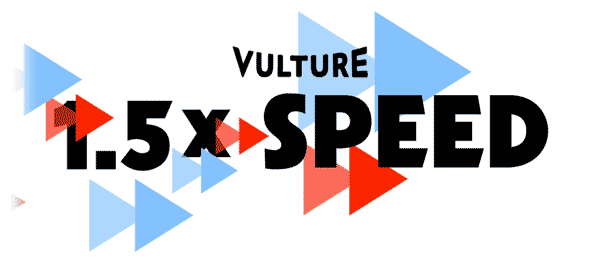| Mushroom Wellington, how I love you. |
| Enjoying 1.5x Speed? Feel free to send this newsletter to your buds, and click here to read previous editions. And hey, feel free to write me anytime: nicholas.quah@vulture.com. |
 | 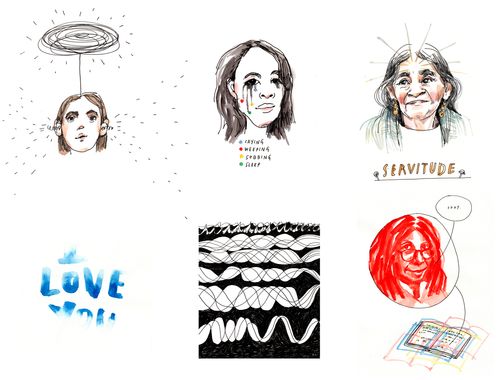 | | Illustration: Wendy MacNaughton | | | | Several weeks ago, six people took to a stage in Austin, TX, to present a collection of three-minute audio shorts. The pieces were weird and experimental to varying extents. One recalled a series of psychedelic mushroom trips, another worked off a progression of primal screams. But they all emerged from an exercise where the main thing that mattered was to rediscover a sense of freedom during a time where the craft they practice feels so constricted in its possibilities. |
| That stage was part of a festival organized by IMI, or the Independent Media Initiative, an Austin nonprofit endeavoring to realize an alternative space for independent creators who operate within ecosystems rendered constantly volatile by pure for-profit incentives. But the stage itself was produced by a separate fledgling initiative called Audio Flux whose mission is simple: It’s time once again to go back to the basics. Specifically, that means short-form pieces, an emphasis on creativity over all other considerations, and building a space for a community to rediscover a sense of play once again. |
| Audio Flux was developed by Julie Shapiro and John DeLore, both vaunted veterans of the radio world. Shapiro was the founding executive producer of Radiotopia, and also co-founded the highly influential Third Coast International Audio Festival way back when. Meanwhile, DeLore has worked in practically every technical capacity for a range of audio publishers (WNYC, Gimlet, Stitcher) over the past decade. If you’ve ever heard Death, Sex, and Money, you can thank him for the theme song. |
| As has been discussed here and elsewhere many times before, it’s been a horrendous stretch for the podcast world, which continues to do its thing of radically undervaluing the people who actually make the stuff in this business. DeLore, for instance, was laid off from Stitcher back in March despite a long and decorated track record helping to breathe this new medium to life. |
| He had just set up his own production shingle when Shapiro, herself a free agent nowadays, reached out with the idea for Audio Flux, which was inspired by a prior experience. “Audio Flux is a direct descendant of the Third Coast Short Docs,” Shapiro told me, referring to a competition program the festival ran between 2003 and 2016. “It’s something we did at Third Coast that I loved so much, which is to create this engine for creating small pieces, giving experienced people a playground to do different things, and becoming a platform for new blood who can then find opportunities through having done something.” |
| The two had broadly known each other beforehand, but they finally clicked over this opportunity to collaborate. “I mean, I now have the time” — he laughs — “the energy, and the motivation to help redefine this medium that I love at this moment,” said DeLore, before emphasizing that Audio Flux isn’t alone in the effort of redefinition and carving out purely creative spaces. Third Coast is still around, of course. So is KCRW’s 24 Hour Radio Race, though that seems to be on pause this year. And then there are a host of other newer projects: Good Tape, Sound Fields, and so on. |
| Anyway, here’s how the whole thing works. Operating in cycles, Audio Flux puts out a call for experienced and budding producers to throw their names into the mix. Six are ultimately invited to create three-minute audio pieces working off a predetermined set of prompts and constraints, which Shapiro and DeLore will assist in producing. Aside from a stage presentation, the pieces will live on the website, though there are plans to eventually release them as a podcast or some sort of other program to distribute them more widely. Shapiro and DeLore’s intent is to work with new creative partners with each cycle, and for this inaugural batch, the Audio Flux crew struck up a collaboration with the IMI Festival along with the illustrator Wendy MacNaughton, whose work you might be familiar with if you happen to own a copy of Samin Nosrat’s Salt, Fat, Acid, Heat. They hope to widely expand that network of collaborators over time, with Audio Flux operating as something of a traveling band that slots into existing infrastructure. |
| The inaugural cycle features a deep bench of talent who have all, in one way or another, been impacted by the vicissitudes of the media biz in the past year: Aaron Edwards, previously a senior producer and co-host of the now-retired Pop-Up Magazine; Chloe Prasinos, who had been a senior producer at Pineapple Street; Megan Tan, laid off from LAist Studios earlier this year; Yowei Show, the co-host of Invisibilia before its cancellation by NPR; Mathilde Urfalino, until recently was a development producer at Gimlet Media; and Gregory Warner, whose program Rough Translations was also recently canceled at NPR. |
| A few rules governed their three-minute pieces. First, they were instructed to pursue some interpretation of the theme “letting go.” Second, they are prompted to include previously unshared personal archive tape. And third, they were asked to draw inspiration from one of three illustrations — keys, gas station, someone reading — made by Wendy MacNaughton for the occasion. |
| I’ve asked Shapiro and DeLore to talk through the six pieces, which you can listen to on the website. |
| Mathilde Urfalino: “A Wave is Coming Towards You” |
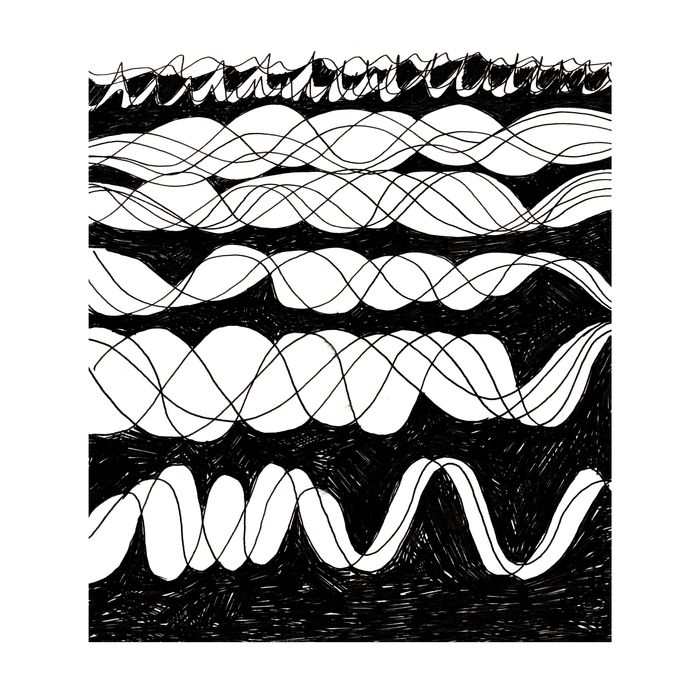 | 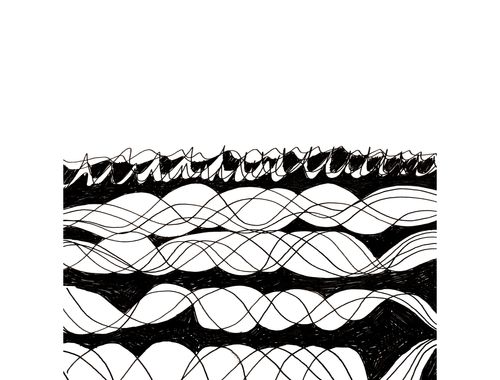 | | Illustration: Wendy MacNaughton |
| “We’ll start with the one that went the furthest out into the universe of possibility. It’s one woman’s attempt to unlock deep screams that are inside of her body and she’s having a hard time getting them out. I think it’s something we can all relate to. You can feel her find her way into those screams and it ends in a sort of place where you’re not really sure exactly what you’re hearing in the end in terms of how she’s processing it. It’s just wonderfully open-ended, and it’s something that listeners can just interpret however they want, need, or are compelled to once they hear the audio. It’s sparse, but it’s spacious as well for a three minute piece.” — J. Shapiro |
 | 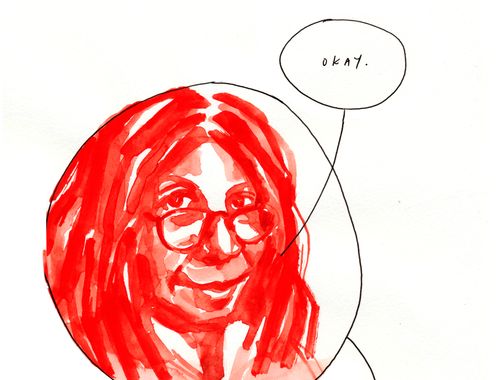 | | Illustration: Wendy MacNaughton |
| “So, [Aaron] started taking psilocybin mushrooms for therapeutic self-care reasons, and he’s kept a journal for those experiences. This is a diaristic piece where it’s a couple excerpts from three different experiences. Aaron is more of a writer-editor — he comes from the Pop-Up Magazine world — and the thing I loved about the piece is how he edited his writing down into the short-form. You have a satisfying arc that ends in a Beyonce concert, but along the way, it’s a journey about trust and friendship. You have these really deep, human, emotional things that are happening right next to him. He picked three distinct scenes, which all happens very simply, but there’s so much happening in all of it.” —J. DeLore |
|
Chloe Prasinos: “A Study in Blue” |
 |  | | Illustration: Wendy MacNaughton |
| “This is a very personal piece for [Chloe], which she doesn’t really get to do, and she took such extreme care with it. It’s the story of her grandmother, her Yaya, losing her language as her dementia sets in, and Chloe observing this in retrospect. It has an interesting thing with tense going on where it’s told in the present tense about these things that have happened in the past. It’s a beautiful piece. It’s funny. It’s a little weird. ‘A Study in Blue’ refers to a painting that her grandma made. We loved that as a title and as she references in the piece, her family wasn’t 100% comfortable with it and she wasn’t sure what to do. So watching her wrestle with what was the right thing to do by her family, by her grandmother, and by herself as an artist was incredible.” —J. Shapiro |
| Megan Tan: “Keys to an Unlocked Door” |
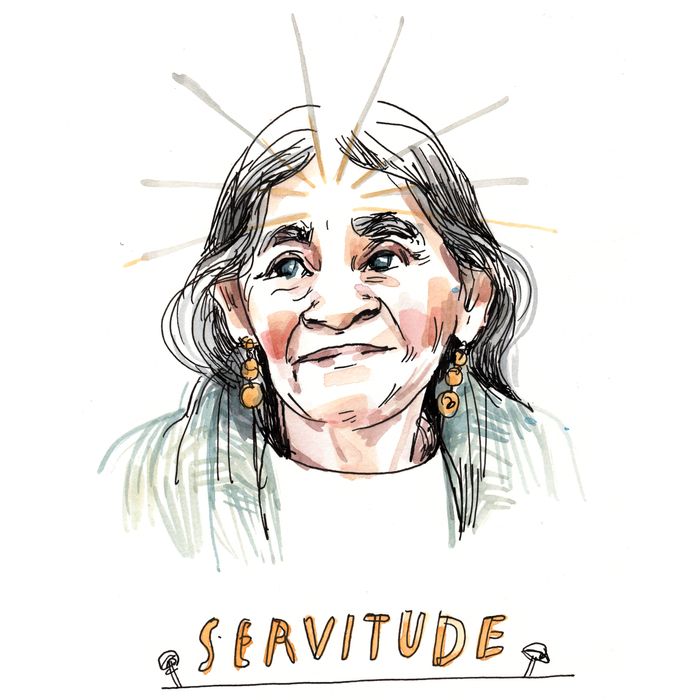 | 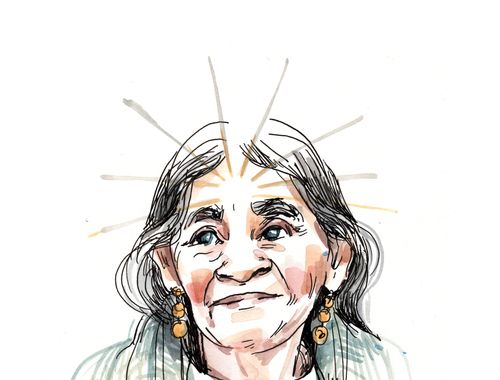 | | Illustration: Wendy MacNaughton |
| “Megan does a lot of personal storytelling in her work, and for her, the project was a space to try and do this thing… I forgot which movie she referenced, but she had this movie in mind where you have two stories that don’t actually ever touch narratively but that echoes off each other. So the piece is half a biography of Maria Sabina, who’s considered the mother of psychedelic mushrooms. It’s partly about Sabina and how she saw her role as a healer, all about servitude and being able to give this gift to people. And the other half is Megan on a call with a psychic, wanting to know what her mission is. Of the six pieces, it’s probably the one that has that thing where you work your way into the piece, and you’re like, ‘I’m not sure what just happened,’ but then a half hour later, your brain goes, ‘oh, okay, cool,’ and it starts to make connections.” —J. DeLore |
| Yowei Shaw: “To Cry or Not to Cry” |
 |  | | Illustration: Wendy MacNaughton |
| “One thing I’ve been remarking to myself is that these six pieces, all very different from the next, they talk to each other in obvious and not so obvious ways, and they really provide a snapshot of now. All of these producers have been let go in the past year. For some people, that was an undercurrent. But for Yowei, it was right at the heart of her piece. She recognized she had been crying a lot throughout all of these Zoom calls and meetings as she was losing her job, and she wanted to interrogate herself: Why did she cry so much? Could she surmount that automatic crying response? So she did this thing where she called up all these people she had cried before in front of and asked them to make her cry — and recorded these conversations. The whole thing is in Yowei’s brilliant hosting style where it’s playful, it’s written really well, she’s kind of light, but then it ends in a very deep, meaningful place.” —J. Shapiro |
| Gregory Warner: “The Sound of Silence” |
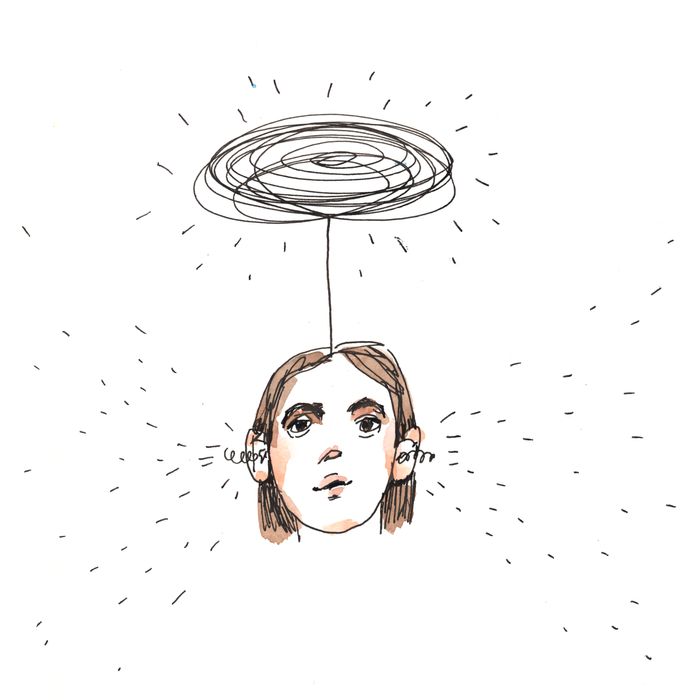 | 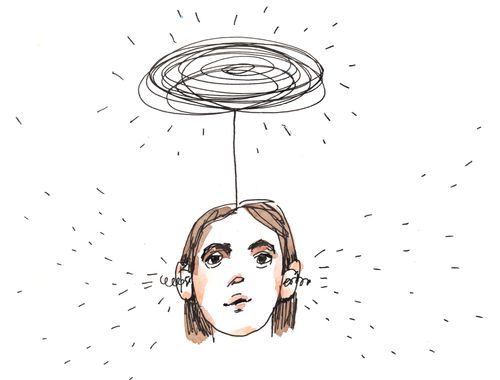 | | Illustration: Wendy MacNaughton |
| “Gregory Warner made this piece, which is about how his wife started to hear this tone in her ear. It’s a pleasant tone, so she starts to feel like it was a spiritual thing until she finds out it was just tinnitus, which takes the wind out of the spiritual sails a little bit. But then she goes, ‘oh well, it still works for me, it’s still a sound to hold on to.’ I’m a huge fan of Rough Translation, and I’ve always known that show was well-written and well-voiced, but working on this, I felt Gregory, of the six makers, was most at-home in the three minute format. He naturally understands how to make the short-form work structurally for an arc. When he was presenting it, he said this really amazing thing where’s like, ‘You’ve got to have two turns,’ and talked in an almost mathematical sense where it would be: ‘This one happened around 48 percent, usually you like it 2 percent earlier like at 50 or something.’ He’s a beautiful writer too. He just had all these little gems of prose, and he would even talk about the alliteration or the rhythm of a line. It felt like a piece that was made by a veteran of the form.” —J. DeLore |
| ➽ Finally sat down and finished off Ghost Story, which I thought was just spectacular from end-to-end. It’s not going to make my final year-end list, unfortunately, due to where my deadlines were, but definitely don’t miss it if you haven’t tried it out already. (Shout-out, once again, to Chloe Prasinos, who was a producer on the project.) |
| ➽ Surely there’s going to be a list out there that will place New Heights with Jason and Travis Kelce at the very top, thereby telling the truth of what a truly strange year it’s been. |
| ➽ I was a little light on new listening over Thanksgiving break, which your humble correspondent spent mostly catching up on shows. That said, my buddy Ariel Shapiro over at Hot Pod turned my attention to The News Agents, which I’m thoroughly enjoying. What business do I have listening to the spicy minutiae of British politics? None whatsoever, but I’m a freak like that. |
| ➽ Bleaching your teeth, smiling flash, talking trash, under your breath. |
| And that’s a wrap for 1.5x Speed! Hope you enjoyed it. We’re back next week, but in the meantime… |
| Sign up to receive Vulture’s 10x10 crossword every weekday. |
| | |
